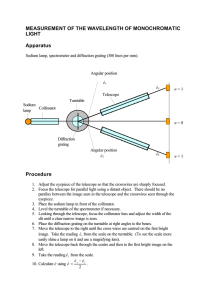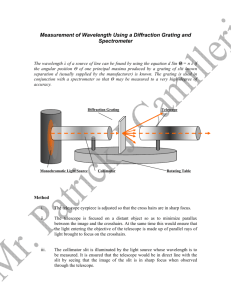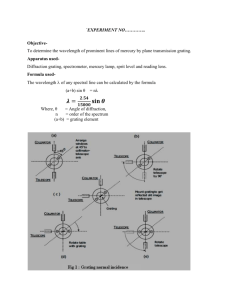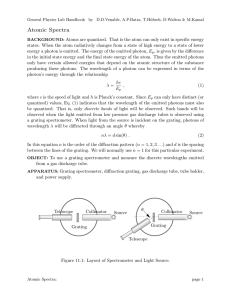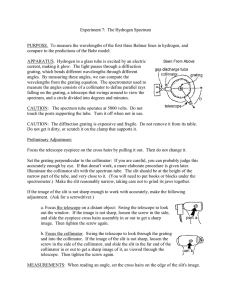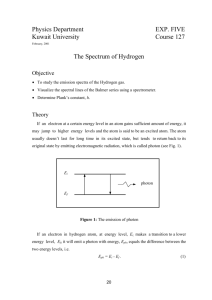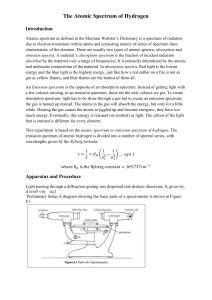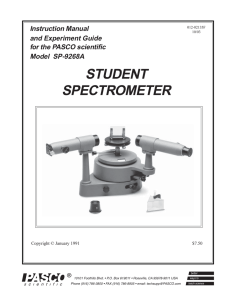Episode 701-2: How to set up a spectrometer (Word, 46 KB)
advertisement
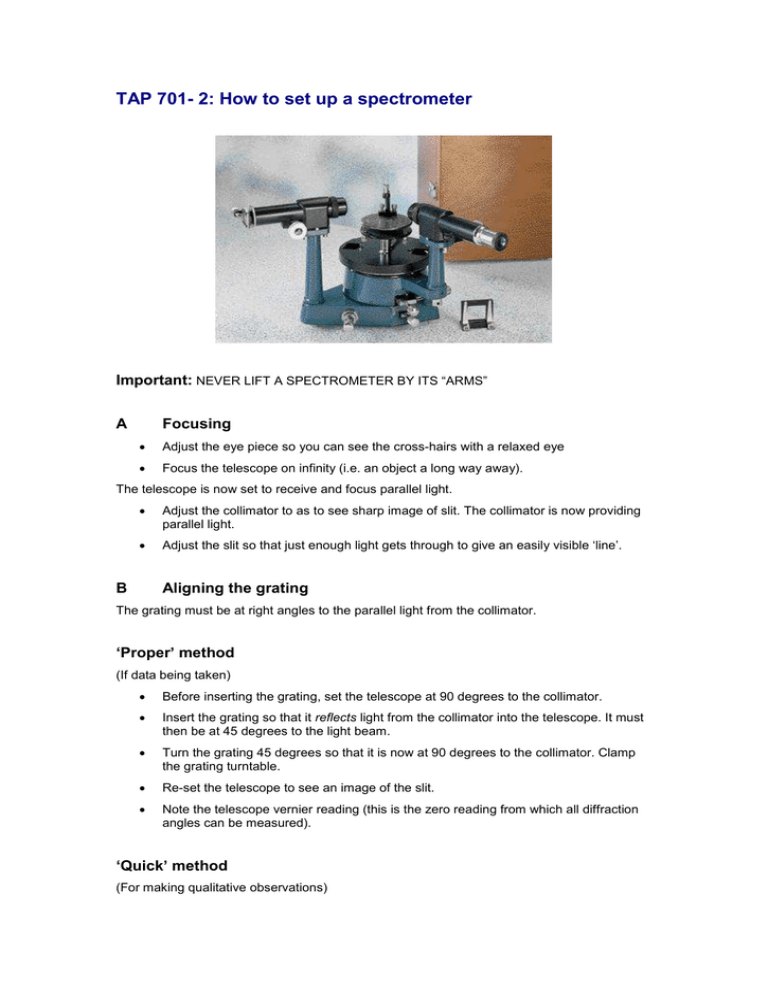
TAP 701- 2: How to set up a spectrometer Important: NEVER LIFT A SPECTROMETER BY ITS “ARMS” A Focusing Adjust the eye piece so you can see the cross-hairs with a relaxed eye Focus the telescope on infinity (i.e. an object a long way away). The telescope is now set to receive and focus parallel light. Adjust the collimator to as to see sharp image of slit. The collimator is now providing parallel light. Adjust the slit so that just enough light gets through to give an easily visible ‘line’. B Aligning the grating The grating must be at right angles to the parallel light from the collimator. ‘Proper’ method (If data being taken) Before inserting the grating, set the telescope at 90 degrees to the collimator. Insert the grating so that it reflects light from the collimator into the telescope. It must then be at 45 degrees to the light beam. Turn the grating 45 degrees so that it is now at 90 degrees to the collimator. Clamp the grating turntable. Re-set the telescope to see an image of the slit. Note the telescope vernier reading (this is the zero reading from which all diffraction angles can be measured). ‘Quick’ method (For making qualitative observations) Line up the telescope at 90 degrees to the collimator Insert the grating by eye at 90 degrees to the collimator. Locate a diffracted beam using the telescope. Slowly twist the grating and find the position when the diffracted beam has the smallest angle of diffraction. Clamp the grating table. [The light from the collimator now ‘sees’ the grating slits at their full width, which gives the smallest diffraction angle: d sin = n , thus sin d-1, maximum ‘d’ gives minimum sin and hence the smallest .] External reference The picture is taken from Resourceful Physics
